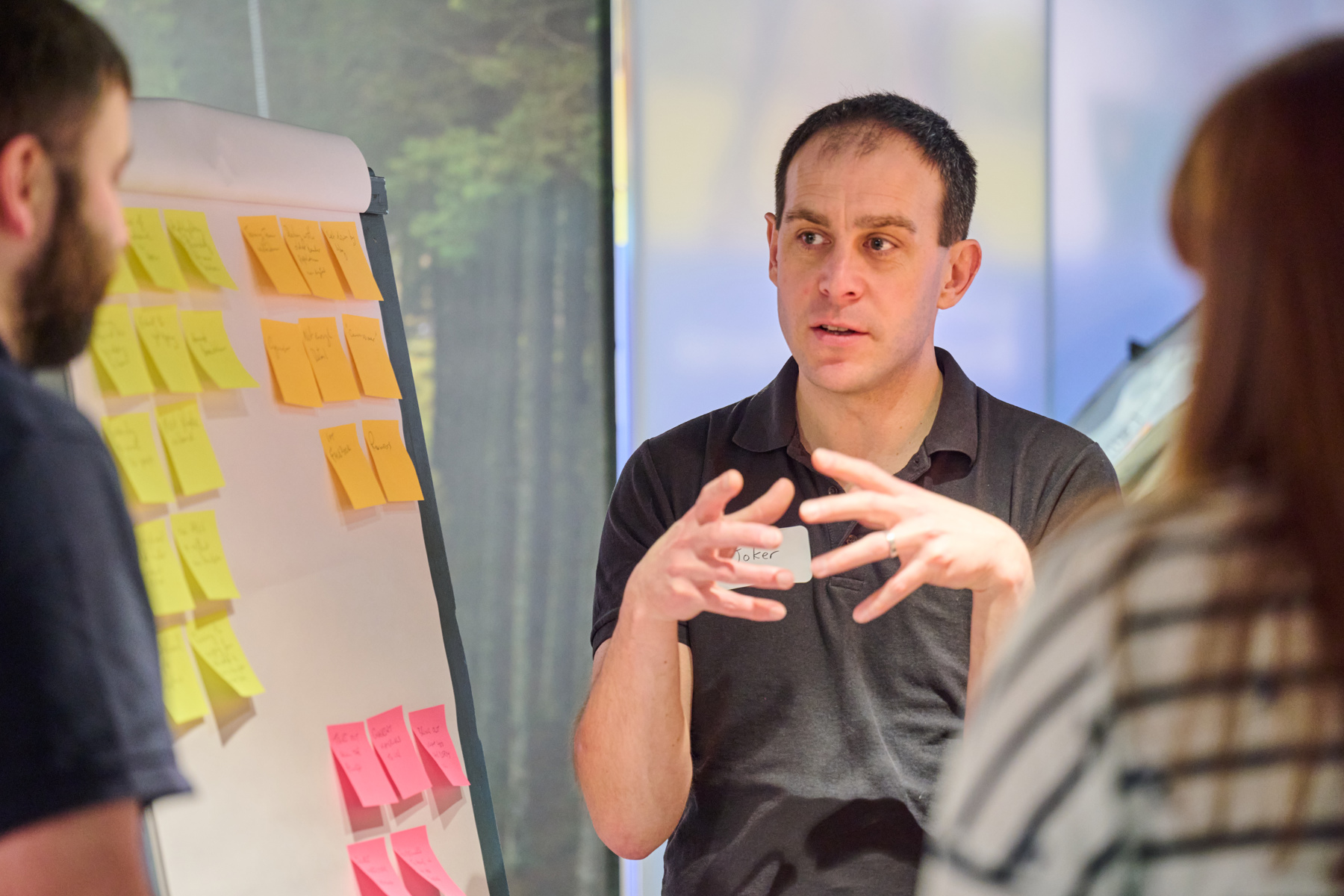Step 3: Deliver
Step 3: Deliver
Before delivering changes, check you’ve:
- Created a Change Plan for your patch
- Got the confidence to talk about change with anyone experiencing it, recognising people may feel differently about change.
- Planned to keep engaging with anyone impacted.
When delivering and leading change, you'll likely be making sure your communications are being received locally, supporting delivery of training and addressing concerns in your patch.
We've created an activity tracker tool, to help you keep track of all the different activities during this step.
This page will help you to complete your activity tracker and start delivering changes in your patch.
Change Champions
One of the ways you can help to embed change locally is having change champions in your patch.
Any volunteer can be a change champion. This isn't an additional role, but someone who is engaged in your changes and can advocate for them locally. A change champion supports and inspires those around them to embrace change and can help to overcome resistance.
What does a change champion do?
- Communicate and engage with people about change.
- Help people overcome resistance.
- Offer training and support.
- Lead by example.

Learning
In your change plan, you might have already found barriers to adopting change, as well as the knowledge and skills people may need to help them adapt.
It’s important people know how to adopt change as it’s rolled out. This means making sure everyone’s had the opportunity to go to training sessions or learn the key skills they’ll need.
It’s now time to think about how you can help people learn these new skills.
Learning can happen in a number of different ways:
- Face to face workshops
- Online learning
- Guides or manuals
- Shadowing or coaching
You should tailor learning to the individuals or groups affected by the change.
Feedback
It’s important to listen to feedback, respond to concerns, and celebrate all the positive things resulting from change, whether they’re big or small.
Feedback plays a key part in carrying out our new changes, as it allows us to monitor progress, identify changes, and keep up to date with changes. Before we invite feedback it’s a good idea to ask ourselves what we need to know about, and what we are prepared to act on. This means we can be specific in what we ask for and manage people’s expectations.
Examples of collecting feedback:
- Surveys
- Polls
- Emails
- Comment boxes
- FAQ forums
- Informal interactions
Open-ended question
'What do you think about the proposed changes?'
Pros: This allows for an infinite number of answers and unexpected ideas, allows for more deep thoughts and feelings to be included, and can provide more in-depth qualitative information.
Cons: This could open yourself up to non-constructive feedback with 'noise'/irrelevant information, and can be hard to analyse and cross-compare.
Closed rating scale question
'On a scale of 1-5, with 1 being X and 5 being X, what do you think of the changes?'
Pros: This question provides repeatable, measurable data that can be used to analyse changes over a time.
Cons: This can be quite restrictive and can prevent respondents from fully communicating their thoughts.
By providing the STAR model as a template for receiving feedback, it can be used as good practice to help feedback be more specific and focus on the outcome, which could make your next steps clearer and easier to deliver.
S: specify the change, process, action, or behaviour
T: tell us what you think
A: adjustment
R: response required, or reflection needed

Tackling obstacles
It’s only natural you’ll face obstacles while leading change. There’ll be lots of different reactions to change, and some people may be more resistant than others.
- Fear of the unknown – for many people, change can be an uncertain and anxious time. As humans, we often find comfort in familiarity, which change can disrupt.
- Loss of control – people may fear losing control over the way they volunteer and this can be daunting.
- Lack of understanding or information – if people don’t fully understand the reasons for change, it’s more likely they’ll resist it.
- Previous negative experiences.
- Personal beliefs and values.
- Strong emotional responses such as anger, frustration, and anxiety.
- Ignoring or avoiding information, not engaging with events or training, or not responding to emails and other communications.
- Giving complaints and criticism, and being negative about change and unwilling to engage with the bigger picture. This isn’t the same as providing feedback when asked, which can be made constructive and offer solutions.
- Verbally agreeing to change something, but not actually carrying out the change.
- Reinforce the 'Big Why' and the reason for change: Ongoing communication is an important part of change. Communicating and helping your patch understand the reasons for change is the first step to helping them overcome any barriers they might face. Remember to look at the tools in ‘Understand’ and ‘Plan’ to help you identify barriers and communicate change.
- Ongoing support: Offer support surrounding the changes to anyone who needs it. Provide learning, resources, and opportunities for people to develop their skills. Address any gaps in knowledge or skills that may be contributing to resistance.
- Address fears and concerns: Address any specific fears and concerns people may have about change. Reassure, correct misconceptions, and be honest about expectations. It’s important to create an environment where everyone feels safe to express their concerns and ask questions.
- Change Champions and leading by example: Leaders and change champions should be as positive as they can about the changes, and actively participate in them. Behave how you’d like to see others act towards the changes, openly embrace them, and talk about your own experiences with change. This can then inspire others and reduce their lack of enthusiasm towards it.
- Break down the changes: If everything’s becoming a bit too overwhelming, break it down into smaller, manageable steps. This’ll help mark progress and build confidence along the way. Celebrate milestones and successes to encourage positive attitudes towards change.
- Address resistance directly: Address it directly and openly, instead of ignoring it. Actively listen, empathise with concerns, and give thoughtful responses. Try and get to a point where everyone’s happy with the outcome, whenever possible.
- Build a supportive culture: Create a culture that embraces change and innovation. Encourage open communication, collaboration, and learning.
- Celebrate and recognise people: It's important to encourage and normalise both embracing change and contributing to its success.
- Continuously monitor progress: Ensure the changes have landed as intended and be open to feedback.
Checklist before moving to Keep Going
- Do we have ongoing support in place for those adopting the change?
- Do we know how to manage resistance to change?
- Do we have people in my area booked onto learning, and do we understand what other learning is available?
- Do we have change champions in place?